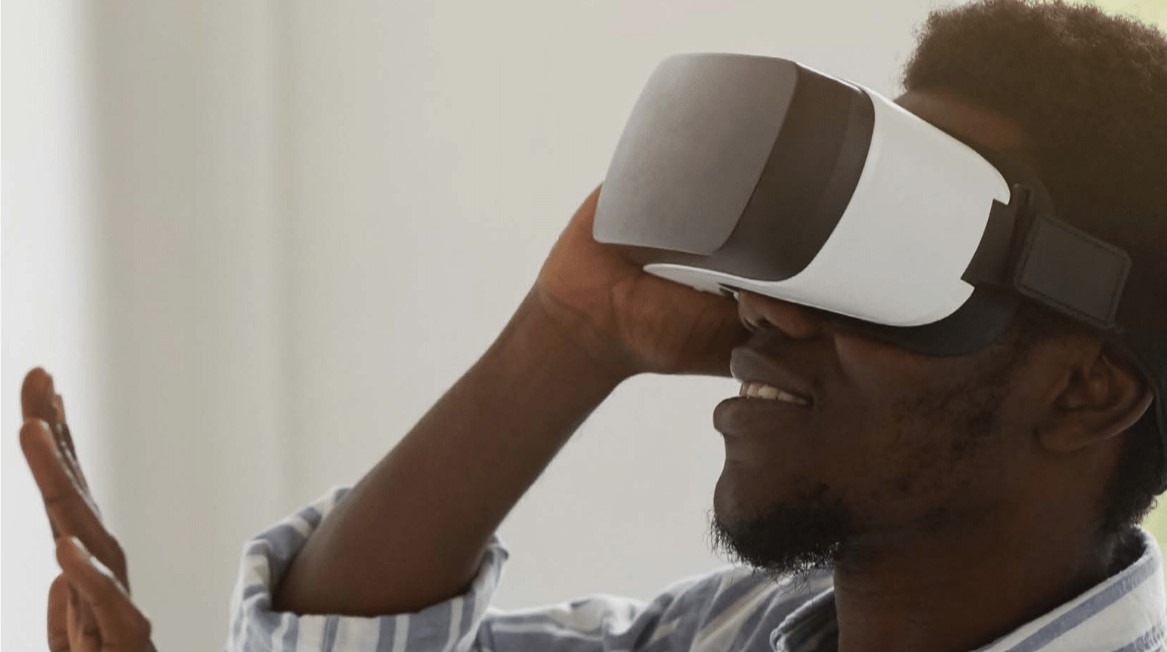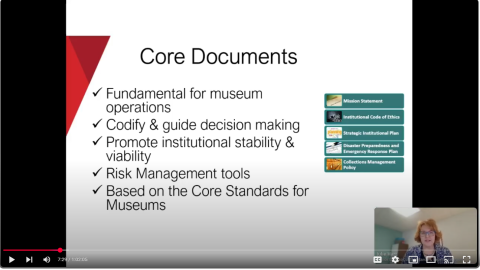
This article originally appeared in Museum magazine’s May/June 2023 issue, a benefit of AAM membership.
Museums need to take a hybrid approach to the visitor journey.
Tell me if you’ve heard this one before: a first-time visitor, a return attendee, and a member walk into your museum. Which one holds the most value to your organization?
As you might have guessed, it’s a trick question. While membership professionals know that members hold significantly more immediate and lifetime value than visitors (4.5 times more value, according to market research from Colleen Dilenschneider), less attention is paid to the potential value of a visitor. This is somewhat understandable, as it’s well-established that it generally takes more time and effort to convert a visitor into a new member than to get an existing member to renew.
Does that mean you’re leaving significant potential value on the table? What does it take to unlock the potential value of a visitor?
We live in a different world than we did before the pandemic, visible both in shifting audience priorities and habits and in the digital transformation of museum approaches to audience engagement, visitor services, programming, operations, and more. During the initial lockdowns, museums were forced to act swiftly to capture audiences in our abruptly virtual world.
As the world reopened and visitors returned on-site, audience needs once again evolved—yet the desire for virtual content has not gone back to its pre-pandemic levels. Since reopening, online visits have remained the same or increased for half of the arts organizations surveyed in a recent study by the Network of European Museum Organisations. And a report from Culture Track on the effects of the pandemic within arts and culture organizations found that a small but steadfast segment of the public (9 percent) prefer to engage exclusively with virtual programming.
The pandemic accelerated us into a digital-first world, and the “new normal” increasingly looks like a hybrid one that includes both in-person experiences and a consistent demand for digital content and virtual interaction.
In 2022, in an effort to explore what “hybrid” means for audiences and museums, the Cuseum team launched the first comprehensive study on hybrid approaches to audience activation, the visitor journey, and programming. Five hundred museum professionals from art museums and galleries; children’s museums; history museums and landmarks; gardens, arboretums, parks, and nature centers; science centers and natural history museums; and zoos and aquariums participated in the survey. Their responses answer questions that include:
- How many museums have launched hybrid programming, and what hybrid offerings are most popular?
- How can digital experiences and touchpoints enhance the visitor experience before, during, and after guests come on-site?
- What digital tools and technologies can help cultural organizations thrive in a hybrid environment?
The Transformed Visitor Journey
The hybrid report offers deeper insight into the ways in which digital has transformed the member journey and audience priorities and needs along the way, conceptualized in three phases: pre-visit, visit, and post-visit. Each stage of this journey can be bolstered through digital exchanges, content, and technology.
Most museums are already doing this: of the 500 cultural professionals surveyed, 70 percent said their institution uses digital or virtual channels to engage in-person visitors before and/or after they visit on-site. On-site offerings can be a catalyst for online engagement, creating an interactive feedback loop that encourages maximum audience participation.
Following are some ideas on how to design the most effective visitor experience from the pre-visit through the post-visit that can help pave the path from visitor to member.
The Pre-Visit
To foster meaningful engagement with your online content and platforms, create a variety of pathways for visitors to explore based on their interests. The Henry Ford Museum of American Innovation and the Museum of Science and Industry, Chicago (MSI), websites provide visitors with custom itineraries based on their preferences. Visitors can develop “My Must-See Guide” at The Henry Ford website or answer a few questions on the MSI website to get a custom agenda for an in-person visit.
Timed ticketing can ease the visitation experience for both visitors and museums, so it’s no surprise that 67 percent of surveyed institutions provide advanced timed ticketing. Timed ticketing, which rose in response to social distancing concerns during the pandemic, is still popular not only as a public health measure but as a way to gather insight into audience habits and needs. With online ticketing and timed ticketing software, data such as audience demographics, attendance trends, and purchasing patterns can be collected and used with customer relationship management (CRM) and point-of-sale (POS) systems to employ dynamic pricing, member-only hours, group reservations, and other ticket bundling offers.
The Visit
While museums are now more likely to offer online experiences, many have been slow to explore technological solutions for their in-person visitors. Only 31 percent of the 500 museum professionals surveyed agreed that they are using such technologies and digital experiences to engage with people visiting them physically. In other words, there’s plenty of room for growth here.
Entry and on-site commerce offer opportunities for engagement as well as revenue. The Georgia Aquarium has partnered with Tessitura to install self-service ticketing kiosks that allow visitors to explore special animal encounters or other offerings at their own convenience. Its popular dolphin show, for instance, is included in the general admission but requires reservations, and for $5, visitors can reserve VIP seats. At special donation kiosks at the National Museums Scotland and People’s History Museum in London, visitors can simply tap their payment device to make a donation.
Strategically placed QR codes or social media prompts can deliver an on-site interactive experience that spreads enthusiasm through online networks. The Philadelphia Museum of Art encourages users to take a selfie at the Great Stair Hall and tag them @philamuseum across Instagram, Facebook, and Twitter.
The Post-Visit
After an on-site visit, museums can continue the engagement by offering online activities related to the on-site experiences. At the new immersive learning center at The Met in New York City, children have access to on-site physical activities along with virtual connections to artwork from its galleries. After their visit, they can continue to explore The Met’s offerings through #MetKids, an online portal that provides engaging and kid-friendly behind-the-scenes videos, gamified interactive museum maps, a “time machine” through 500 years of art history, as well as ideas for home-based arts and crafts projects.
Museums are also using visitor data to offer follow-up activities and targeted offers. For example, at Denver Art Museum, previous visitors are often invited back via promotional campaigns focused on larger exhibitions that require tickets, turning each visit into a powerful opportunity to convert visitors into members.
From the visitors’ standpoint, increased data collection means they expect digital services to be personalized. According to data from the U.S. Chamber of Commerce, personalization not only improves member satisfaction and loyalty, but also helps organizations better understand their constituents’ needs. Anthony Rivera, then VP of Operations and Hospitality at Georgia Aquarium, noted in an interview with Tessitura that 30–40 percent of walk-up guests prefer the automated ticketing kiosks to traditional retail windows. At self-serve kiosks, says Rivera, special offers “feel more like opportunities than upsells,” which has translated to a higher per-capita spend.
The Path Forward
Given that museums are now operating in a hybrid environment, seeking to engage visitors before, during, and after visits with online and digital offerings, what should they focus on to meet audience demands, grow membership, and unlock new revenue streams? Following are some thoughts.
Listen and Communicate to Build Trust
We know that the public has a high level of trust in museums, but it’s worth remembering how essential that trust is in fostering member retention. A 2017 study from Culture Track found that trustworthiness topped members’ list of top loyalty motivators, with61 percent of respondents saying their commitment to a cultural organization is most informed by how much trust they place in the organization.
Listening to and communicating with your members reaffirms this trust. Comment boxes, web pages, and surveys are important ways to actively listen to your constituents—and a critical means of gathering data. In fact, in Cuseum’s 2022 Membership Insights study, collecting member data via surveys was the top tip membership experts gave for determining which digital initiatives to pursue.
Keeping members informed with news and updates sustains engagement and keeps your museum front of mind. For example, research from IMPACTS Experience shows that regularly informing members about their access and benefits helps reduce member turnover associated with members who simply forget to renew.
Collect Data
The private sector has long invested in assessing consumer habits and psychology. By leveraging big data analytics, companies around the globe are gathering valuable insights about customers and partners and using that information to enhance operational efficiency, improve product development, and spark innovative ideas. Such data offers museums invaluable insight into their target audiences’ interests and preferences, allowing them to make informed decisions about programming, promotional initiatives, and outreach.
A good example is demographic data: millennials are now driving up levels of member engagement at many organizations that previously relied on baby boomers for consistent support, according to data from IMPACTS and the National Awareness, Attitudes and Usage Study of Visitor-Serving Organizations. Not only do millennials have a higher lifetime value given their younger age, they have a shorter visitation cycle; they are 30.9 percent more likely to revisit within one year than older generations. In addition, they are 20 percent more likely to recommend an experience to peers. This is invaluable given that word-of-mouth recommendations and other user-generated endorsements are almost 13 times more important in driving reputation and visitation than advertising.
Innovate and Diversify
As early as 2007, the Association of Art Museum Directors released a study that, in part, encouraged museums to “develop and manage a highly diversified portfolio of revenue streams to ensure institutional stability.” And according to the 2022 Commerce Innovation Report, constituent loyalty drops when brands don’t innovate. The report found that more than half of consumers display a strong desire for brands that adapt to meet evolving customer preferences, payment options, and digital devices.
What’s the upshot? Even with attractive incentives and an engaging user experience, offering new and diverse channels for engagement is essential for maintaining an active and loyal member base. In addition to virtual programming and digital communication, this also includes on-site opportunities for engagement that include immersive sensory experiences, gamified interactive exhibits, live social and cultural events, and even digital surveys or other audience feedback mechanisms that collect and leverage visitor data. According to Sigma Data Insights, member renewal rates are not only positively correlated with the number of times a member visits, but also with their level of engagement on-site.
The arts and culture sector has faced a multitude of challenges over the past few years, but by diversifying outreach and communication channels and investing in enhanced digital programming and innovation, museums can drive growth, engagement, and retention. With the right member insights, museums and cultural organizations can deepen constituent relationships, turn visitors into lifelong members and advocates, and continue to provide cultural value to new and returning audiences for years to come.
Resources
The State of Virtual & Hybrid Programs at Cultural Organizations: Volume 1—The Future of the Visitor Experience
The State of Virtual & Hybrid Programs at Cultural Organizations: Volume 2—Virtual and Hybrid Programs
Report: The Impact of Virtual Programs on Revenue Generation for Cultural Organizations
IMPACTS Experience & The National Awareness, Attitudes, and Usage Study (NAAU)
Culture Track: Culture + Community in a Time of Transformation (Wave 2)







